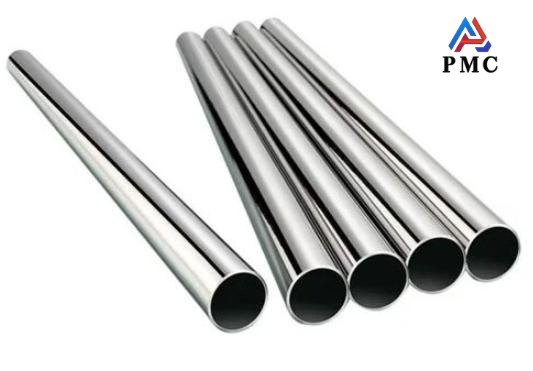
What are the Mechanical Properties of 316L Stainless Steel Pipe?
In order to prevent defects in the processing of 316l stainless steel pipes during deep processing such as bending, stamping, and stretching, its mechanical properties cannot be ignored, because they will directly affect the processing quality of 316l stainless steel pipes. What are the mechanical properties of 316l stainless steel pipes? Mechanical properties generally refer to mechanical properties. The mechanical properties of pipes refer to the mechanical characteristics exhibited when subjected to various external loads (tension, compression, bending, torsion, impact, etc.) in different environments (temperature, medium, humidity).
Tensile strength: strong resistance to stretching
Tensile strength is an important indicator to measure the material's ability to resist fracture under tensile load. The tensile strength of 316L stainless steel pipe is ≥480MPa, which means that it can still maintain structural integrity and is not prone to fracture when subjected to large tensile forces. Taking the supporting components in the building structure as an example, if 316L stainless steel pipes are used, when the building is subjected to tensile stress caused by external forces such as wind and earthquake, it can effectively support the building structure and ensure the safety of the building with its excellent tensile strength.

Yield strength: a solid structural guarantee
Yield strength is a measure of the stress at which a material begins to undergo significant plastic deformation. When the stress on a material reaches the yield strength, irreversible permanent deformation will occur. The yield strength of 316L stainless steel pipe is ≥177MPa, a feature that makes it play a key role in many engineering applications. In building structures, 316L stainless steel pipes serve as supporting components that can withstand the weight of the building itself and the pressure generated by various external forces. When the pressure reaches a certain level, if the yield strength of the material is insufficient, deformation or even collapse will occur. The 316L stainless steel pipe can effectively resist these pressures with its good yield strength, maintain the stability of the structure, and ensure the safety of the building during long-term use.
Elongation: good plastic performance
Elongation is a measure of the percentage of the elongation of the original gauge length after the material breaks due to tension, which reflects the material's ability to deform uniformly or stably. The elongation of 316L stainless steel pipe is ≥40%, which indicates that it has good plasticity. In practical applications, this feature enables 316L stainless steel pipe to be easily stretched and bent into various shapes.
Hardness: wear resistance and deformation resistance
Hardness indicates the ability of a material to resist a hard object pressing into its surface. It is one of the important performance indicators of 316l stainless steel pipe. Generally, the higher the hardness, the better the wear resistance. Commonly used hardness indicators include Brinell hardness, Rockwell hardness and Vickers hardness.
Brinell hardness: ≤187HB. Press a hardened steel ball of a certain size into the surface of the material with a certain load, keep it for a period of time, and then remove the load. The ratio of the load to the indentation area is the Brinell hardness value (HB).
Rockwell hardness: ≤90HRB. Rockwell hardness is an indicator that determines the hardness value based on the depth of plastic deformation of the indentation, with 0.002 mm as a hardness unit. HRB is the hardness obtained by using a 100Kg load and a hardened steel ball with a diameter of 1.5875mm, and is used for materials with lower hardness.
Vickers hardness: ≤200HV. Vickers hardness refers to using a diamond regular pyramid indenter with an angle of 136° between the relative faces to press into the surface of the test sample under the action of a specified load F, maintaining the load for a certain period of time, then unloading the load, measuring the diagonal length d of the indentation, and then calculating the indentation surface area. Finally, the average pressure on the indentation surface area is calculated, which is the Vickers hardness value of the metal, represented by the symbol HV.
Conclusion
These mechanical properties of 316L stainless steel pipes do not exist in isolation, but are interrelated and mutually influential, and together constitute its excellent comprehensive performance. In many fields such as chemical, food, medical, and construction, it is these performance advantages that enable 316L stainless steel pipes to meet various complex and stringent use requirements and become the ideal material choice for many industries.
In practical applications, we need to fully consider the various mechanical properties of 316L stainless steel pipes and select products of appropriate specifications and models according to specific working conditions, such as stress conditions and environmental factors. Only in this way can we maximize the performance advantages of 316L stainless steel pipes, ensure the safe and stable operation of engineering projects, and provide reliable material support for the development of various industries.
Read more: 316 Stainless Steel Pipe lnner Wall Coating Treatment


